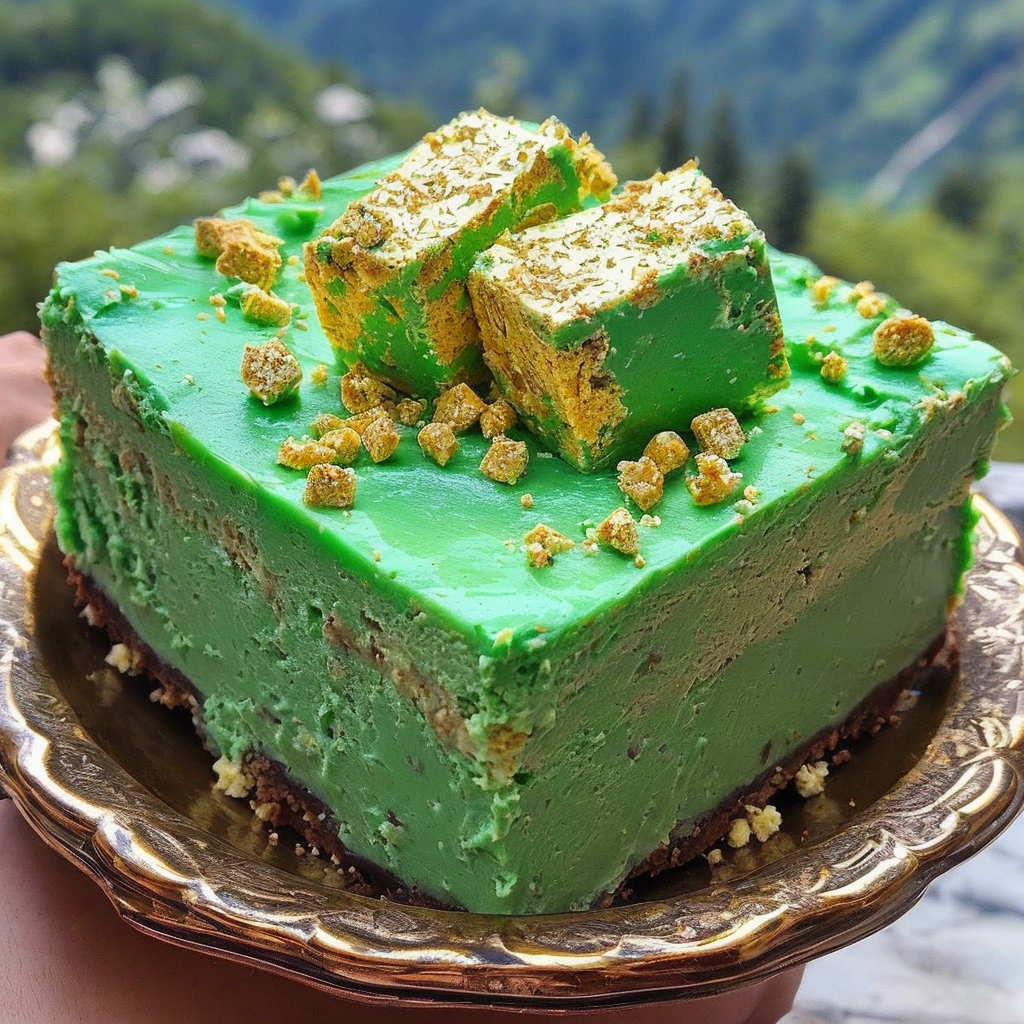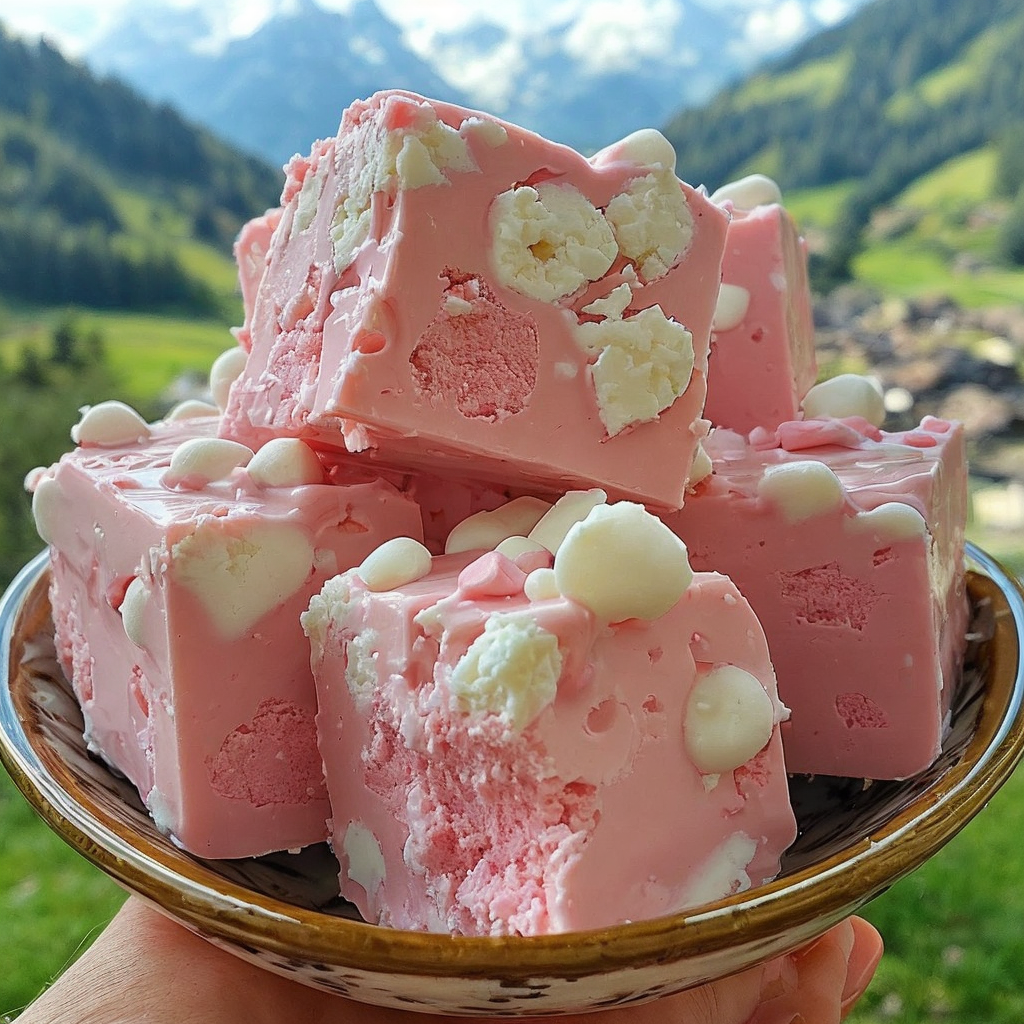Gingerbread Cupcakes with Creamy Cinnamon Frosting: A Festive Treat to Delight Your Senses
Imagine biting into a soft, moist cupcake where the warmth of ginger and spices envelops your taste buds. These gingerbread cupcakes are the epitome of festive baking, topped with a creamy cinnamon frosting that melts in your mouth. Whether for a holiday gathering or a simple sweet treat, they offer a delightful combination of flavors that evoke the cozy feeling of classic holiday desserts.
The rich molasses adds depth, while the spices bring warmth, complementing the lightness of the cupcakes perfectly. The frosting, infused with cinnamon, enhances the overall flavor profile, creating a harmonious blend of sweetness and spice. These are not just any cupcakes; they are a celebration of the holiday spirit in every bite, appealing to both children and adults alike.
The creamy cinnamon frosting is the ideal companion to these spiced cupcakes, providing a silky finish that elevates the dessert to new heights. The combination of ginger and cinnamon isn’t just flavorful but also aesthetically pleasing, making these gingerbread cupcakes a showstopper at any event. Crafting this recipe is an experience, a joyous journey that culminates in creating a batch of delectable treats that are hard to resist.
Quick Recipe Highlights
- Flavor Profile: The gingerbread cupcakes have a rich, spiced flavor due to the blend of ginger, cinnamon, and nutmeg, with a sweet touch from the creamy frosting.
- Texture: The cupcakes boast a perfect balance between moist and fluffy, while the frosting adds a creamy smoothness across the palate.
- Aroma: A warm, inviting aroma of ginger and cinnamon fills the air as they bake, providing a sensory experience that hints at the deliciousness to come.
- Visual Appeal: With their golden-brown hue and snow-white frosting swirls, these cupcakes are visually stunning and entice anyone who lays eyes on them.
- Skill Level Needed: Moderate; the recipe requires basic baking skills and attention to detail in mixing ingredients and frosting the cupcakes.
- Special Equipment: You will need a standard muffin tin, cupcake liners, mixing bowls, and an electric mixer to achieve the best results.
Recipe Overview
- Difficulty Level: Moderate – This recipe requires straightforward techniques like mixing and frosting, but attention to ingredient measurements and baking times is crucial for perfect results.
- Category: Dessert – A perfect sweet addition to any meal or festive gathering.
- Cuisine: This dessert has roots in Western baking but is widely loved for its universally appealing spices and flavors.
- Cost: Moderate – The ingredients are standard pantry staples, though fresh spices and quality molasses can influence cost slightly.
- Season: Best enjoyed during the cooler months; ideal for the holiday season when warm spices are most appreciated.
- Occasion: Perfect for festive gatherings, holiday parties, or as a sweet treat to enjoy with family during cozy evenings at home.
Why You’ll Love This Recipe
These gingerbread cupcakes offer a delightful balance of bold, warm flavors thanks to the spices that shine through in every bite. The creamy cinnamon frosting adds a sweet, smooth contrast, creating a dessert that is both comforting and exciting to the taste buds.
The preparation of these cupcakes is both fun and rewarding. The process is straightforward, allowing even novice bakers to create a professional-quality dessert. Preparing and decorating them can be a joyful activity shared with family or friends, making the journey to a delicious treat as enjoyable as eating it.
From a nutritional standpoint, ginger and cinnamon bring potential health benefits, including anti-inflammatory properties. Molasses, while sweet, also contains some vitamins and minerals, making this dessert not only tasty but also somewhat wholesome.
Serve these at your next social event for a conversation-starting dessert. Their enticing aroma and beautiful presentation are sure to impress guests and add a homemade touch to any gathering. They make for excellent gifts, too, as their festive flair is always well-received.
Despite their gourmet appeal, the ingredients for these cupcakes are accessible and often pantry staples. This makes them both cost-effective and easy to prepare on short notice, ensuring you don’t have to break the bank to enjoy a truly delicious homemade dessert.
Historical Background and Cultural Significance
Gingerbread dates back centuries, deeply rooted in ancient traditions where ginger was revered for its culinary and medicinal properties. Initially introduced to Europe in the 11th century, gingerbread evolved from a confectionery made by monks to a staple in cultural festivals across the continent.
In various cultures, gingerbread has been shaped into impressive architectural structures or delicately decorated cookies. Its inception as a cupcake is a much more modern adaptation, one that combines traditional flavors with contemporary baking styles.
The spices used in gingerbread have long symbolized warmth and festivity, making it an integral element of holiday celebrations worldwide. The tradition of utilizing gingerbread during winter months persists, characterized by its comforting flavors and robust tastes.
Regional variations of gingerbread showcase diverse uses of spices, sweeteners, and additional ingredients, demonstrating how this traditional dish has adapted and been embraced by different cultures. Each version has its own charm and maintains the spirit of the original confection.
Ingredient Deep Dive
Ginger: This spicy root has a rich history dating back to ancient China and India. Known for its distinctive heat and sweetness, ginger is both a flavor powerhouse and a potential digestive aid. When selecting ginger, choose firm, smooth skin for optimal freshness. Store in a cool, dry place or freeze to extend shelf life. If fresh ginger is unavailable, ground ginger can serve as an adequate substitute.
Molasses: A byproduct of sugar cane or beet refinement, molasses imparts a deep, earthy sweetness crucial to gingerbread’s traditional flavor. It offers a moderate source of minerals, such as iron and calcium. When choosing molasses, opt for unsulfured varieties for the purest taste. Store tightly sealed in a cool, dark pantry. Substitute with honey or maple syrup if necessary, but be mindful of altering the flavor profile.
Cinnamon: Essential for cinnamon frosting, this aromatic spice is known for its warming, sweet, and woody notes. Cinnamon, derived from tree bark, is rich in antioxidants and may have anti-inflammatory benefits. For the best quality, buy ground cinnamon in small quantities and store in a tight container. If substituting with cinnamon sticks, remember the flavor intensity varies.
Common Mistakes to Avoid
- Overmixing the batter can lead to dense cupcakes. Mix until ingredients are just combined to maintain a light texture.
- Ignoring ingredient temperatures can affect results. Use eggs and butter at room temperature for better emulsification.
- Skipping molasses substitution consideration can alter flavors dramatically. Ensure you use a similar sweetener if necessary.
- Frosting too soon will cause melting. Let cupcakes cool completely before decorating.
- Incorrect oven temperatures can ruin texture. Ensure your oven is correctly preheated and use an oven thermometer if unsure.
- Using old spices diminishes flavor. Always check expiration dates for maximum freshness.
- Neglecting cupcake liners may make removal difficult. Always line your muffin tin.
- Not measuring flour correctly leads to dryness. Spoon into the measuring cup and level with a knife for accuracy.
- Overbaking results in dry cupcakes. Check doneness with a toothpick to avoid this.
- Improper storage affects freshness. Keep in an airtight container to maintain softness and flavor.
Essential Techniques
Measuring Ingredients: Accurate measurement is crucial for consistent results. Always use a scale for dry ingredients and specific measuring cups for liquids to ensure precision.
Creaming Butter and Sugar: This technique incorporates air, which contributes to a lighter cupcake texture. Beat them together until pale and fluffy for the best outcome.
Frosting Techniques: Using a piping bag provides control and allows for even, attractive distribution of frosting. Explore different tips for various decorative effects.
Baking Time Management: Keeping an eye on baking time is vital. Look for signs like golden edges and a clean toothpick to gauge doneness effectively.
Folding: Combine wet and dry ingredients with a gentle folding motion to maintain air and avoid tough cupcakes. Use a spatula and light wrist movement for ideal results.
Proper Cooling: Allow cupcakes to cool in the pan briefly, then transfer to a rack to prevent residual heat from overbaking. A completely cool cupcake is less likely to have frosting issues.
Pro Tips for Perfect Gingerbread Cupcakes
Maintain an even batter distribution by using an ice cream scoop. This ensures cupcakes bake evenly in both size and texture.
Add a touch of orange zest to the batter for an unexpected citrus note that complements the spices beautifully.
For extra moisture, consider adding a tablespoon of applesauce along with the wet ingredients. It integrates well with the ginger flavor.
Enhancing cinnamon flavor in the frosting can be achieved with a sprinkle of cinnamon sugar atop the finished cupcakes.
For individualized decoration, consider topping each cupcake with a candied ginger piece for added flair and texture.
When piping frosting, apply consistent pressure and move in a circular motion to achieve smooth, professional-looking swirls.
Before serving, lightly dust with powdered sugar for a snow-dusted effect, enhancing visual appeal, especially during the holidays.
Experiment with different frosting shapes and decor elements like edible glitter or holiday-themed sprinkles to suit specific occasions.
Variations and Adaptations
For a spicier kick, try incorporating a bit of ground black pepper or cayenne into the batter for a unique twist on traditional gingerbread.
In warmer months, consider swapping the cream cheese in the frosting for a mascarpone base, resulting in a lighter summer cupcake.
Achieve a gluten-free version by using a high-quality gluten-free flour blend to seamlessly replace all-purpose flour in the recipe.
To create a vegan variant, substitute dairy products with plant-based equivalents such as coconut oil and almond milk, and use flax eggs in place of regular eggs.
Add chopped nuts such as pecans or walnuts to the batter to introduce a new texture and a nutty counterpoint to the sweet spices.
Invert the flavors by making a ginger-infused frosting over vanilla cupcakes, allowing the spiced elements to shine in new ways.
Introduce a fruit element, like diced apple or pear, into the batter to create a deliciously juicy component that pairs with ginger seamlessly.
Serving and Presentation Guide
For an elegant touch, present cupcakes on a tiered cake stand to allude to their sophisticated flavors and make them the centerpiece of your table.
Garnish each cupcake with a small mint sprig or holiday-themed candy to add a dynamic green shade against the warm spice tones.
Pair with a dollop of freshly whipped cream or a scoop of vanilla ice cream for a luxurious, complete dessert experience.
For a novel serving approach, deconstruct the cupcakes into jars with layered frosting for a portable and visually appealing treat.
Consider serving at room temperature to allow the spices and frosting to express their full flavors and textures naturally.
Maintain balance by offering a secondary option, like fruit skewers, for guests who appreciate a lighter accompaniment to their cupcake.
Wine and Beverage Pairing
Opt for a sweet Riesling or Moscato wine that complements the spicy notes with its light, fruity sweetness, enhancing the cupcake experience.
Pair with mulled cider or a spiced tea for a non-alcoholic option that mirrors the warmth of the ginger and cinnamon.
If you’re serving these cupcakes during a morning gathering, consider a rich, smooth vanilla latte as a perfect coffee pairing.
Consider serving alongside hot cocoa with a hint of chili for a playful, contrasting experience that aligns perfectly with the gingerbread theme.
Chilled sparkling water with a splash of citrus juice cleanses the palate between bites, allowing each cupcake’s flavors to shine anew.
Aim to serve beverages at complementary temperatures—wine chilled and coffee piping hot—for a harmonious dining experience.
Storage and Shelf Life
Store cupcakes in an airtight container at room temperature to preserve their texture and prevent staleness. They’ll keep fresh for up to three days.
For longer storage, refrigerate them in a sealed container for up to a week, ensuring the frosting remains intact and deliciously soft.
Freezing is possible—wrap each cupcake individually in plastic wrap, then in foil, storing them in a freezer-safe bag for up to three months.
Signs of spoilage include any off odors or flavors, or if the cupcakes become too dry or hard. Always check before serving.
When ready to enjoy frozen cupcakes, thaw them at room temperature or defrost gently in the microwave, taking care to avoid texture changes.
Reheat cupcakes in a preheated oven for a few minutes to refresh their soft texture if they have become slightly stale.
Make Ahead Strategies
Bake cupcakes a day in advance, allowing them to cool fully before storing in an airtight container to maintain freshness.
Prepare frosting ahead and store it separately, chilled in the refrigerator. Let it reach room temperature for easy spreading or piping before use.
If stacking or transporting, frost on-site to ensure the cupcakes arrive in pristine condition for any event or gathering.
Assemble frostings using fresh cream or milk right before serving to maintain their creamy texture and vibrant taste, especially in warm climates.
Mix dry ingredients ahead of time, storing them in a sealed bag, to simplify the baking process when you’re ready to begin.
Invest in a cupcake carrier to simplify transport while maintaining aesthetic appeal and preventing damage.
Scaling Instructions
When halving, reduce ingredient amounts evenly and consider using a smaller muffin pan to ensure even baking times.
Doubling or tripling the recipe is straightforward but may require extra mixing batches if your equipment’s capacity is limited.
Adjust oven timing slightly when baking large batches, as the increased moisture may slightly alter the drying process in the oven.
For substantial batches, consider freezing some, noting “Storage and Shelf Life,” so you have a ready-made dessert on hand.
If scaling for a large event, pre-measure ingredients into sets to streamline the baking process and focus energy on technique.
Ensure you use a reliable oven thermometer, as larger batches can create slight temperature variations affecting cooking evenly.
Nutritional Deep Dive
These gingerbread cupcakes provide a mix of macronutrients with moderate fats from the frosting and carbohydrates from the sugars and molasses, important for an energy boost.
In terms of micronutrients, molasses is surprisingly nutritive, offering small amounts of essential minerals like iron, calcium, and magnesium.
Ginger carries potential health benefits, ranging from anti-inflammatory effects to digestive health support, aligned with traditional uses over centuries.
By controlling portion sizes and moderation consumption, these cupcakes can fit within a balanced diet without derailing typical nutritional goals.
Keep alternative sweeteners in mind when necessary to adjust sugar levels for health advantages without sacrificing flavor completely.
Substituting whole grain flour can provide additional fiber, aligning with dietary goals without significantly impacting the cupcakes’ beloved texture.
Dietary Adaptations
For gluten-free, choose a reputable gluten-free flour blend and check labels on other ingredients to ensure no cross-contamination.
To make dairy-free, opt for plant-based yogurt and cream cheese to maintain a creamy texture without animal products.
Vegan adaptations can include egg replacements like applesauce or a chia seed mixture, ensuring a tender and fluffy crumb.
Low-carb enthusiasts can experiment with almond flour mixtures and alternative sweeteners to maintain flavor with significantly reduced carb counts.
A keto version might include coconut flour adaptations, aligned with high-fat frostings and sugar substitutes like erythritol.
Paleo interpretation can use almond flour and coconut milk to adhere to primal lifestyle restrictions while maintaining the dish’s core flavors.
Low-FODMAP considerations would involve omitting molasses for maple syrup and experimenting with coconut sugar for a gut-friendly alternative.
Troubleshooting Guide
If cupcakes are too dense, likely causes include overmixing or expired leaveners. Always use fresh baking powder and fold gently.
Achieving the right balance of spices can be tricky. Gradually taste the batter, adjusting accordingly to suit personal preferences without overpowering.
If frosting melts, ensure cupcakes are cooled entirely before application and aim to frost in cooler conditions to maintain texture.
Variations in texture often signal inconsistent ingredient temperatures or inaccurate measurements. Room-temperature components combine more smoothly.
Don’t stress if you run out of specific equipment; many tools are interchangeable, such as using a hand whisk instead of an electric mixer.
For dry outcomes, baking times may need adjustment. Ensure batter isn’t overbeaten, as this can release crucial moisture incorporated during mixing.
Stale spices won’t deliver depth of flavor. Replace spices promptly and regularly to guarantee the richest possible taste.
Experiment confidently with substitutes, but scrutinize with neutrality, especially where texture and consistent flavor balance are concerned.
Recipe Success Stories
Community response has been overwhelmingly positive, with many readers enjoying the festive flavors and easy steps for replication.
Some have incorporated reader suggestions of adding citrus zest or chocolate chips for extra flavor dimensions to resounding success.
Reader-adapted versions include gluten-free, nut-adapted, and rum-flavored frostings, expanding the recipe’s versatility while honoring core elements.
Inward discussions have provided great insight into varying presentation techniques, imparting professional-looking results with home-level ease.
Reader photography has showcased varied decoration methods with a broad array of garnishes, ranging from traditional to modern flair.
Suggestions over hands-on family activities while crafting these cupcakes have made them a preferred choice for many holiday afternoons.
Frequently Asked Questions
Can I make these cupcakes vegan? Yes, substitute dairy products with plant-based alternatives such as almond milk and ensure eggs are replaced with suitable vegan solutions.
How do I ensure my cupcakes are light and fluffy? Don’t overmix the batter, use room-temperature ingredients, and ensure your leaveners are fresh for optimal results.
What should I do if my frosting is runny? Adjust by gradually mixing in powdered sugar to thicken; ensure frosting elements are appropriately chilled before whipping.
What if my cupcakes sink in the middle? Critically check baking soda and powder viability, as runtime differences along with ingredient freshness heavily influence successful rising.
Can I use ground ginger instead of fresh? Ground ginger can replace fresh if necessary, but remember to adjust quantities, as ground will typically be more potent.
Can I make this recipe as a cake? Yes, adapt proportions and baking time accordingly; aim to keep batter levels consistent and ensure proper cake pan preparation.
Why are my cupcakes dry? Mix only until ingredients combine, monitor bake length carefully, and check ingredient proportions against listed values for accurate outcomes.
How can I scale this recipe? Maintain an even ratio when adjusting ingredient amounts, retaining consistency and incorporating practical knowledge of the oven and space constraints.
Can I add more spices? Certainly; enhance or adapt the spice mix according to personal preference, aligning it with desired flavor depth without overwhelming sweetness or structure.
Additional Resources
Exploring other seasonal recipes can inspire creativity and expand your dessert repertoire, introducing new flavors, textures, and ingredient combinations.
Explore spiced cake guides and books focusing on the blend of spices, understanding ingredient function, and balancing various sweeteners.
Ingredient diaries that delve into the rich history of spices used, spotlight their culinary narratives, and appreciate their global culinary adoption.
Consider investing in specialized baking equipment for higher accuracy, standardization, and skillful execution, transitioning home cooking into professional-like mastery.
Maintain familiarity with seasonal fruit and vegetable availability to accentuate your dessert with refreshing components that enhance both taste and presentation.
Join the Conversation
Engage with us on social media by sharing your gingerbread cupcake creations and join a community sharing tips, variations, and presentation ideas.
Photography submissions remain popular in our community—showcase your work and receive constructive feedback that ensures delightful photo-worthy results.
Leave recipe reviews to encourage fellow bakers and note adaptations that have proven successful and those which need mindful alteration.
Connect and exchange ideas in our forums with fellow dessert enthusiasts, gathering inspiration, support, and new techniques for the future.
Share your personal recipe adaptations, building on global culinary innovation, and contribute to a growing library of personalized gingerbread cupcake renditions.
The Recipe
Gingerbread Cupcakes with Creamy Cinnamon Frosting
Serves: 12 cupcakes
Prep Time: 20 mins
Cook Time: 18 mins
Total Time: 38 mins
Kitchen Equipment Needed
- Muffin tin
- Cupcake liners
- Mixing bowls
- Electric mixer
- Ice cream scoop (for batter portioning)
- Cooling rack
- Piping bag and tips
Ingredients
- 1 1/2 cups all-purpose flour
- 1 teaspoon baking soda
- 1/2 teaspoon salt
- 1 tablespoon ground ginger
- 1 teaspoon ground cinnamon
- 1/4 teaspoon ground nutmeg
- 1/2 cup unsalted butter, softened
- 1/2 cup granulated sugar
- 1/2 cup molasses
- 1 large egg
- 1 teaspoon vanilla extract
- 1/2 cup buttermilk
Directions
- Preheat your oven to 350°F (175°C) and line a muffin pan with cupcake liners.
- In a bowl, whisk together flour, baking soda, salt, ginger, cinnamon, and nutmeg.
- In another bowl, beat the butter and sugar until light and fluffy. Mix in molasses, egg, and vanilla extract.
- Gradually add the dry ingredients to the wet mixture, alternating with buttermilk, beginning and ending with flour. Mix until just combined.
- Divide the batter evenly among cupcake liners, filling about 2/3 full.
- Bake for 18-20 minutes, or until a toothpick inserted into the center comes out clean. Cool completely on a wire rack.
- For the frosting, beat together softened cream cheese, butter, powdered sugar, and ground cinnamon until smooth and fluffy.
- Pipe the frosting onto cooled cupcakes using a piping bag and decorative tip of choice.
- Store in an airtight container until ready to serve.
Recipe Notes
- For more robust ginger flavor, add 1/4 teaspoon ground cloves to the dry mix.
- If you prefer less sweet frosting, reduce powdered sugar by 1/4 cup.
- Decorate with sugared cranberries or a sprinkle of cinnamon sugar for holiday flair.




